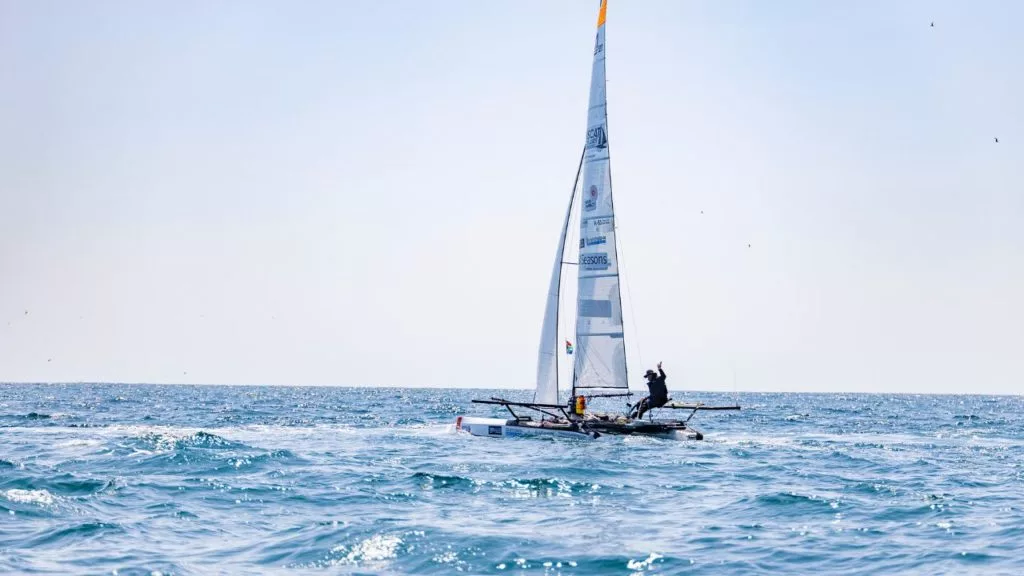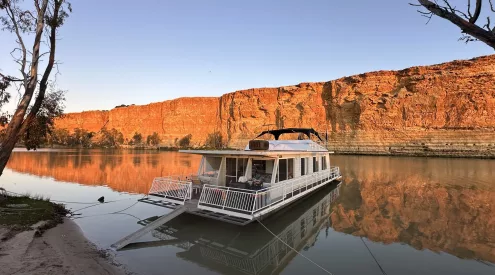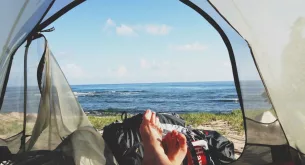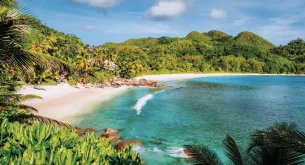
Image: Supplied
Renowned South African adventurer Chris Bertish departed Mission Bay, San Diego, today, 25 June, on a 20-foot production catamaran, commencing a 2 800-nautical-mile unsupported crossing to Hawaii that combines extreme athleticism with tangible conservation impact.
ALSO READ: Jason Gipson of Lion Sands Game Reserve wins Safari Guide of the Year 2025
The TransCat Expedition 2025 marks the first attempted traverse of this route on an open-deck beach catamaran, a vessel offering no cabin protection from storms, scorching sun, or 20-foot Pacific swells.
Bertish (49) aims to complete the journey in under three weeks while spearheading four major sustainability initiatives – planting 6 000 trees, restoring Hawaiian coral reefs, funding a Kenyan education centre, and hosting live ocean-streamed lessons for students globally.
The expedition builds on his 2017 Atlantic paddleboard crossing and 2021 wing-foil voyage but presents new technical dangers due to the catamaran’s minimalistic design.
Engineering for extremes
The modified Gemini 20 catamaran underwent two months of sea trials to withstand the crossing. Key adaptations include:
- Solar-powered desalination for drinking water
- Reinforced hulls to survive rogue waves
- Satellite-linked classrooms enabling real-time youth engagement
Conservation through endurance
Bertish’s Wild Impact partnership ties nautical milestones to measurable outcomes, such as 1 000 miles sailed = 2 000 trees planted in Malawi, halfway point = Coral nursery installation in Hanauma Bay, and successful landing = full funding for Kenya’s circular economy school.
‘This expedition is to raise awareness for ocean conservation, to empower education, and to prove that one person can still make a massive difference,’ he noted.
The expedition will broadcast STEM lessons via satellite to 12 partnering school networks, including South Africa’s Maritime Youth Development Programme. Students can submit questions Bertish will answer during calm weather windows.
Risk factors
Maritime safety experts identify three primary hazards:
- Sleep deprivation (20-minute naps maximum due to navigation demands)
- Equipment failure (nearest assistance is 5+ days away)
- Thermal stress (prolonged exposure to sun/sea with no shelter)
Bertish’s training included 72-hour solo endurance drills and storm simulations.
‘Every storm I’ve weathered in preparation has brought me here. This isn’t just about crossing an ocean. It’s about crossing the boundaries of what’s possible for people and for future generations,’ Bertish explained pre-departure.
Daily position updates will be posted at www.transcatexpedition.com, with emergency beacons activated if the catamaran drifts beyond 50 miles of the rhumb line. The vessel carries a 30-day supply surplus in case of delays.
Article shared by Cape Town ETC.
ALSO READ: New provincial nature reserve in Overberg secures largest renosterveld stretch on Earth
Follow us on social media for more travel news, inspiration, and guides. You can also tag us to be featured.
TikTok | Instagram | Facebook | Twitter

















